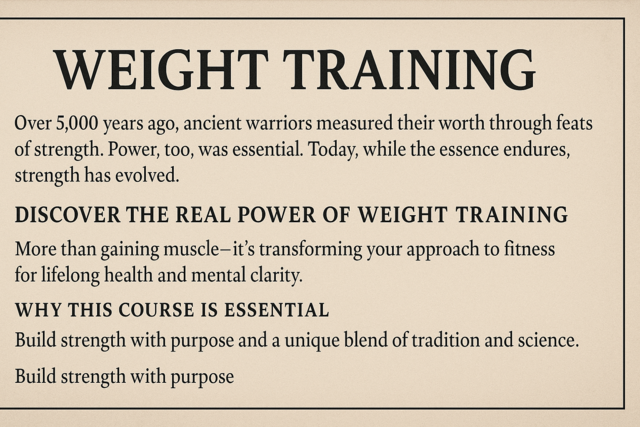In this article, you will learn about perhaps the most publicized allergy- peanuts. You will explore just how common this allergy is, who it affects, as well as the proper detection and treatment options available to those who suffer from peanut allergies. Due to the breadth and depth of this particular topic, this article will focus entirely on peanut allergies.
Section 1. Peanut Allergy Overview and Statistics
The majority of allergies are identified early in life, between birth and age 3. This is the period of time when a person's immune system develops the most and creates a blueprint for the identification and destruction of potentially harmful substances. It is also during this time that parents are introducing new foods and ways of eating, which could potentially prompt the development of an allergy. The following statistics show the breakdown of the development of food allergies by age:
Of 38,480 people ages 0-18 tracked from 2008-2010, overall 8% were identified as having a genuine food allergy.
-
Approximately 6% aged 0-2 years have a food allergy
-
About 9% aged 3-5 years have a food allergy
-
Nearly 8% aged 6-10 years have a food allergy
-
Approximately 8% aged 11-13 years have a food allergy
-
More than 8.5% aged 14-18 years have a food allergy
-
38.7% of food allergic children have a history of severe reactions
-
30.4% of food allergic children have multiple food allergies
-
Of food allergic children, peanut is the most prevalent allergen, followed by milk and then shellfish
When one thinks of food allergies, peanuts (not to be confused with tree nuts- walnuts, hazelnuts, and Brazil nuts, etc.) are usually top of mind. With stories of violent reactions and even death associated with this allergy, many people- even those without a known peanut allergy- have become wary. However, the fact is that although peanuts are one of the top food allergens, they cause considerably fewer reactions than other foods, such as shellfish and on their own cause very few deaths.
It is true that peanuts represent the second highest food allergy category and are the leading cause of allergy related deaths. And while this sounds extremely alarming, the actual number of fatalities attributed to allergies in the United States is 200 per year, only approximately 10 of those are the result of consumption or contact with peanuts.
Section 2. Symptoms of Peanut Allergies
Peanut allergies can cause symptoms similar to many other allergens. However, they also have the potential to cause a severe- even life threatening reaction. It is important to note that not only whole peanuts, but their dust and residue can also cause severe reactions in highly allergic people. Below are the common symptoms associated with peanut allergies:
-
Stomachache or nausea
-
Hives, redness or rash
-
Facial swelling
-
Trouble breathing, wheezing
-
Runny nose
-
Itching or tingling inside the mouth and throat, or around the lips
The symptoms above can vary from mild, to moderate, to life threatening. If a person rapidly experiences an inability to breath, swelling of their throat, wheezing and dizziness- they may be suffering from food-induced anaphylaxis and require immediate emergency treatment.
Anaphylaxis is a severe reaction in which the allergen (peanuts) comes into contact with antibodies present on mast cells. The chemicals that are released as a result have a swift and severe effect on blood vessels, the lining of the lungs and throat, as well as the skin. The result is a rapid drop in blood pressure, restricted breathing and potentially shock and death. To treat this condition, the patient must receive an injection of epinephrine (adrenaline) immediately to halt the symptoms. More information on the administration of epinephrine and other emergency measures are discussed in the upcoming treatment section. Those who have experienced an anaphylactic reaction must be extra cautious, because a severe reaction to one food is linked to a 40% chance of experiencing a similar reaction to other food groups.
Section 3. Causes of Peanut Allergies
An allergy is the immune system incorrectly identifying the proteins present in a particular food as a foreign invader. This causes the immune system to attack the food particles as they come into contact with mast cells in tissues throughout the body, causing the symptoms of an allergic reaction. This is the case for peanut allergies as well. Also, with most allergies, researchers do not have a definitive answer as to why this occurs, however, there are some plausible hypotheses. Below are the situations scientists feel are causative in developing an allergy to peanuts- and may apply to other allergens as well:
-
The Hygiene Hypothesis- this unique theory postulates that the reason for the sharp increase in allergies lies in the fact that as a society in general, humans have become cleaner than ever- perhaps too clean. This may seem absurd, but consider that the body develops immunity to viruses, bacteria and fungi by being exposed to them. Once your body has been able to read the DNA of a particular pathogen, your immune system is able to formulate an antibody against this specific threat. Modern vaccinations for diseases such as the chicken pox and measles are based on this theory. By injecting a person with a "weakened" strain of the disease, the immune system is able to fight it off- and while doing so, develop an immunological defense to put into play if this specific threat reappears.
-
Breastfeeding is thought to be a major contributor to the development of peanut allergies. Most allergies are noticed within the first three years and if the mother consumes peanuts, trace amounts of peanut proteins may be present in the milk and prompt an allergy. As the baby's first source of food, breastfeeding mothers are sometimes cautioned to avoid eating peanuts, especially if they have ever noticed any type of allergic reaction- even as small as an itchy tongue. However, even if the mother has never experienced an allergic reaction, it is possible for the infant to develop an immune sensitivity.
-
Physical Contact with someone who has just eaten peanuts or has residue on their fingers can prompt an allergic skin reaction- especially in babies. It has been noticed that some infants develop a rash on their cheeks after being kissed by someone who recently ate peanuts. Washing up well before handling a newborn can help to prevent this.
-
Using Nut Based Oils early in life to moisturize baby's skin can prompt an allergic reaction. The oil may not be made from peanuts, but often peanut residue can be found in factories that process other types of nuts.
-
Genetics is the cause of peanut allergies in some people. A person is more likely to develop an allergy to any food if one or both parents have allergies. The risk increases even more if the parent is allergic specifically to peanuts.
Section 4. Diagnosing Peanut Allergies
If you experience any type of suspected allergic reaction when eating or handling peanuts, immediate evaluation by a physician is recommended. In some cases the patient will be prescribed medications or lifestyle modifications to deal with an actual intolerance, instead of a bona fide allergy. However, depending on the severity of the reaction, the doctor may be certain of an allergy. Even so, it is important to conduct testing to ensure that peanuts are actually the culprit and not another food. There are a number of methods the practitioner may utilize to identify or rule out an allergy. The most common diagnostic tools and those used by the world renowned Mayo Clinic can be found below:
-
The doctor will usually first and foremost ask you to recount the events that led up to what you feel are allergic reactions. This may include the setting- indoors or out, the season, food or combination of foods eaten, reaction and the amount of time from consumption to the onset of symptoms. All of this helps to build a profile. However, a thorough doctor will rarely rely on this information alone unless the patient experienced a severe or life threatening reaction.
-
Physical examination. A careful exam can identify or exclude other medical problems.
-
Food diary. Your doctor may ask you to keep a food diary of your eating habits, symptoms and medications to pinpoint the problem.
-
Elimination diet. If it isn't clear that peanuts are the culprit, or if your doctor suspects you may have a reaction to more than one type of food, an elimination diet may be needed. You may be asked to eliminate peanuts or other suspect foods for a week or two, and then add the food items back into your diet one at a time. This process can help link symptoms to specific foods. If you've had a severe reaction to foods, this method can't safely be used.
-
Skin test. A skin prick test can determine your reaction to particular foods. In this test, small amounts of suspected foods are placed on the skin of your forearm or back. Your skin is then pricked with a needle, to allow a tiny amount of the substance beneath your skin surface. If you're allergic to a particular substance being tested, you develop a raised bump or reaction.
-
Blood test. A blood test can measure your immune system's response to particular foods by checking the amount of allergy-type antibodies in your bloodstream, known as immunoglobulin E (IgE) antibodies. For this test, a blood sample taken in your doctor's office is sent to a medical laboratory, where different foods can be tested. However, these blood tests aren't always accurate.
Section 5. Precautions and Treatment for Peanut Allergies
For those dealing with peanut allergies, the condition is often requires lifelong management. Approximately 20% of children diagnosed with a peanut allergy will grow out of the condition as they get older. For the rest, strict avoidance is necessary to avoid uncomfortable and potentially fatal outcomes. The following precautions are recommended for someone with an allergy to peanuts:
-
Once diagnosed with a peanut allergy, strict avoidance of all food and skin care products that contain peanuts is imperative. Also, some packaging may state that there may be traces of peanuts in non-peanut products due to using the same manufacturing plants. These items are best avoided as well. In addition, some people will want to avoid products that contain tree nuts, because of the risk of cross contamination.
-
Also, become familiar with which foods have a high likelihood of containing peanuts or peanut sauce. Exercise extreme caution in eating out, especially at African, Chinese, Thai and Malaysian, Mexican and Vietnamese restaurants, which rely heavily on peanuts in their recipes. Other foods to be careful of include mixed nuts, chocolates, pastry, granola, bread and baked goods, salad dressings and oils and energy bars.
-
Antihistamines (medication to block chemicals produced by mast cells which trigger allergy symptoms) may be used to combat mild to moderate allergic reactions. These include thing such as hives, itching and watery eyes.
-
For anyone with a peanut allergy, it is important to understand that symptoms from coming into contact with this allergen can be potentially serious resulting in anaphylaxis, as explained above. Due to the risk, it is beneficial to have an emergency dose of injectable epinephrine (adrenaline) on hand (epipen). If you feel that a reaction is severe, utilize the injection (administer in the thigh) to reduce symptoms while on the way to the emergency room. If you are prescribed an epinephrine auto-injector, ensure that you and those close to you know how to use it in case of an emergency. It is also helpful to have a spare in your desk at work or glove compartment as a backup.
Peanut allergies should be taken very seriously. It is important to carefully monitor the food of someone with this allergy, especially a child. However, with careful attention to detail and proper emergency planning, people with peanut allergies can lead a long, full life, with hopefully only minor inconvenience.
























